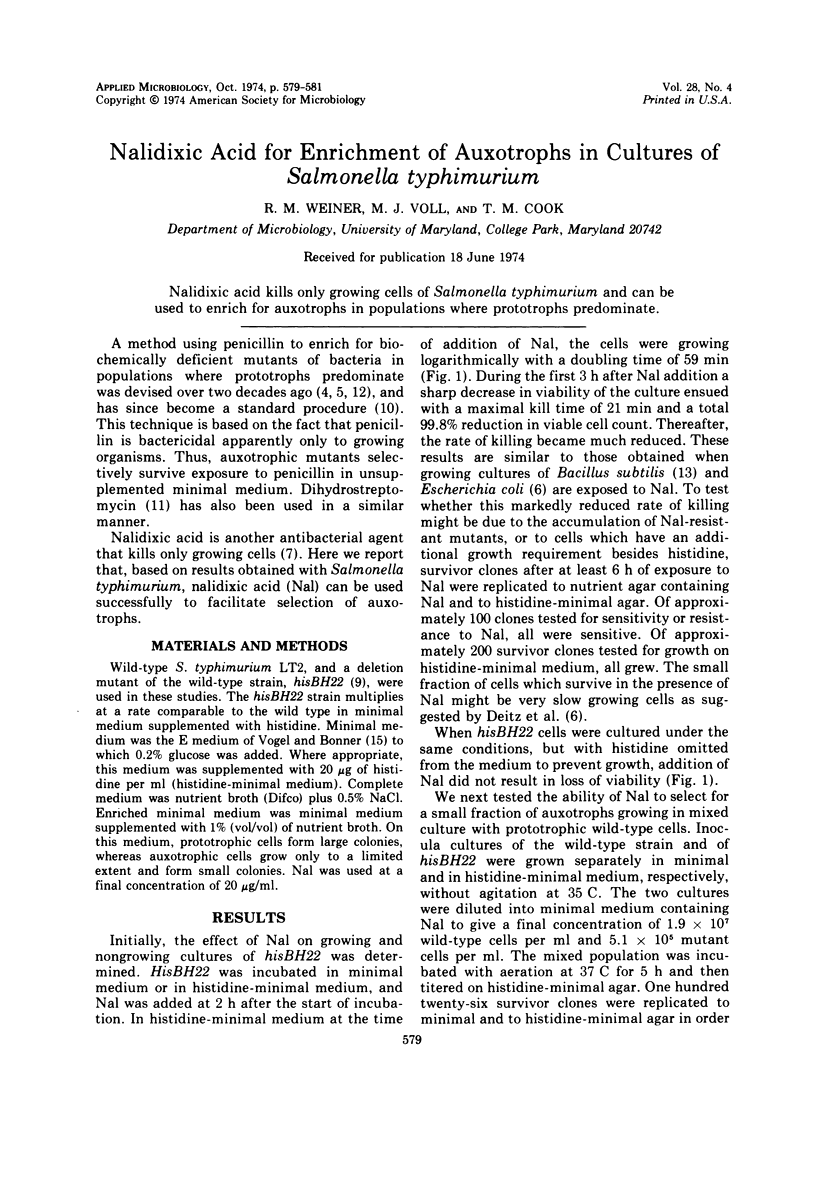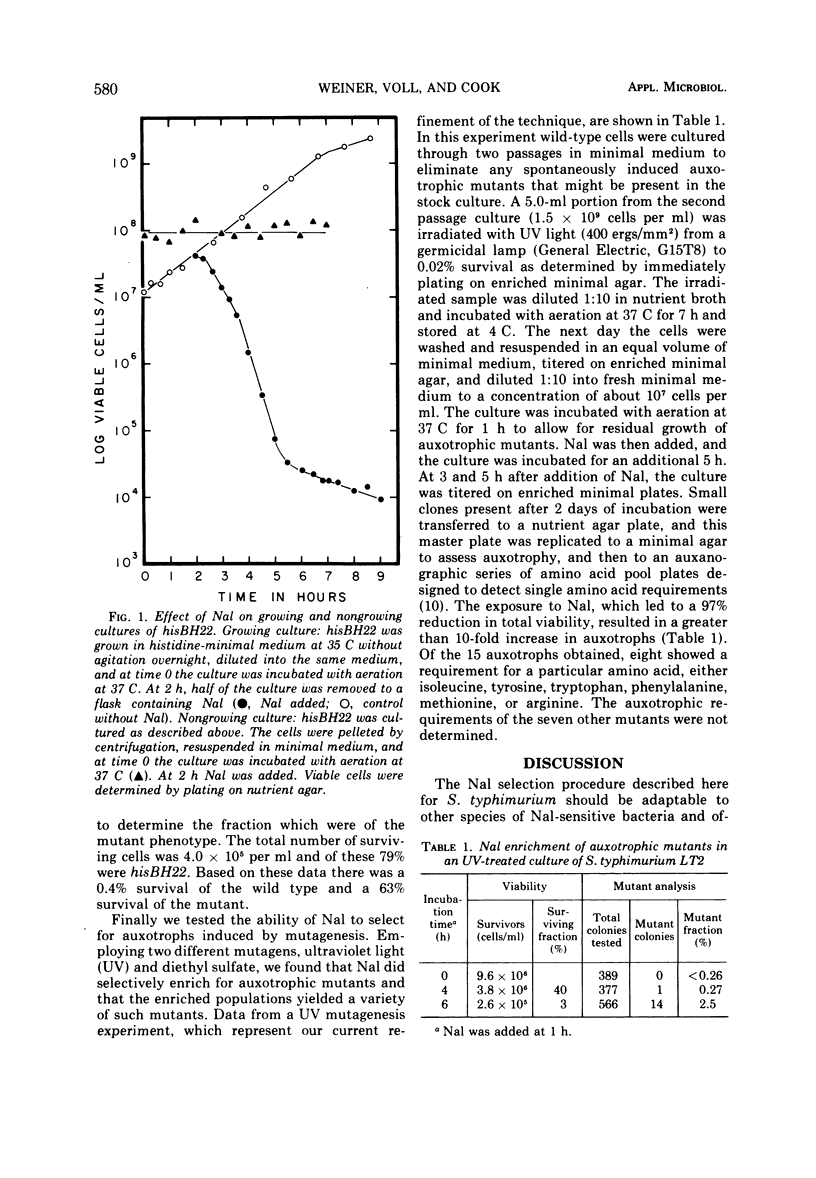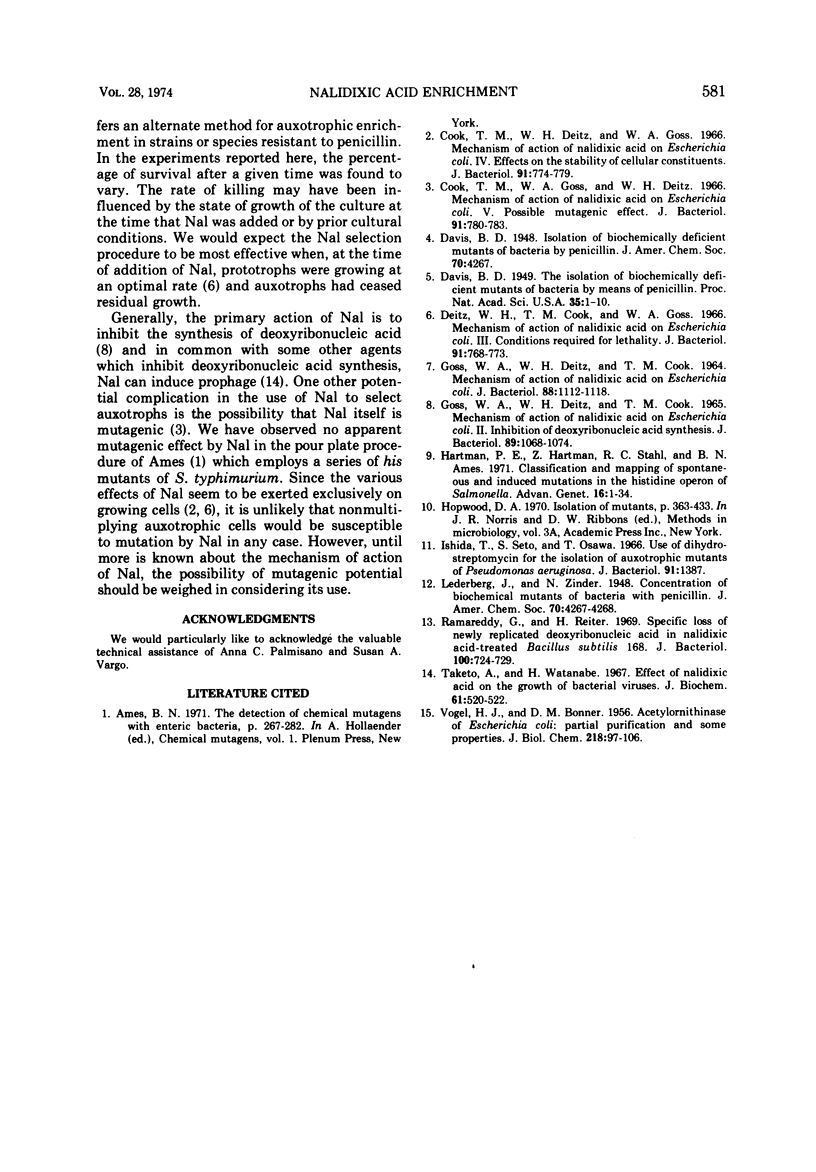Abstract
Nalidixic acid kills only growing cells of Salmonella typhimurium and can be used to enrich for auxotrophs in populations where prototrophs predominate.
Full text
PDF


Selected References
These references are in PubMed. This may not be the complete list of references from this article.
- Cook T. M., Deitz W. H., Goss W. A. Mechanism of action of nalidixic acid on Escherichia coli. IV. Effects on the stability of cellular constituents. J Bacteriol. 1966 Feb;91(2):774–779. doi: 10.1128/jb.91.2.774-779.1966. [DOI] [PMC free article] [PubMed] [Google Scholar]
- Cook T. M., Goss W. A., Deitz W. H. Mechanism of Action of Nalidixic Acid on Escherichia coli V. Possible Mutagenic Effect. J Bacteriol. 1966 Feb;91(2):780–783. doi: 10.1128/jb.91.2.780-783.1966. [DOI] [PMC free article] [PubMed] [Google Scholar]
- Davis B. D. The Isolation of Biochemically Deficient Mutants of Bacteria by Means of Penicillin. Proc Natl Acad Sci U S A. 1949 Jan;35(1):1–10. doi: 10.1073/pnas.35.1.1. [DOI] [PMC free article] [PubMed] [Google Scholar]
- Deitz W. H., Cook T. M., Goss W. A. Mechanism of action of nalidixic acid on Escherichia coli. 3. Conditions required for lethality. J Bacteriol. 1966 Feb;91(2):768–773. doi: 10.1128/jb.91.2.768-773.1966. [DOI] [PMC free article] [PubMed] [Google Scholar]
- GOSS W. A., DEITZ W. H., COOK T. M. MECHANISM OF ACTION OF NALIDIXIC ACID ON ESCHERICHIA COLI. J Bacteriol. 1964 Oct;88:1112–1118. doi: 10.1128/jb.88.4.1112-1118.1964. [DOI] [PMC free article] [PubMed] [Google Scholar]
- GOSS W. A., DEITZ W. H., COOK T. M. MECHANISM OF ACTION OF NALIDIXIC ACID ON ESCHERICHIA COLI.II. INHIBITION OF DEOXYRIBONUCLEIC ACID SYNTHESIS. J Bacteriol. 1965 Apr;89:1068–1074. doi: 10.1128/jb.89.4.1068-1074.1965. [DOI] [PMC free article] [PubMed] [Google Scholar]
- Hartman P. E., Hartman Z., Stahl R. C. Classification and mapping of spontaneous and induced mutations in the histidine operon of Salmonella. Adv Genet. 1971;16:1–34. doi: 10.1016/s0065-2660(08)60352-1. [DOI] [PubMed] [Google Scholar]
- Ishida T., Seto S., Osawa T. Use of dihydrostreptomycin for the isolation of auxotrophic mutants of Pseudomonas aeruginosa. J Bacteriol. 1966 Mar;91(3):1387–1387. doi: 10.1128/jb.91.3.1387-.1966. [DOI] [PMC free article] [PubMed] [Google Scholar]
- Ramareddy G., Reiter H. Specific loss of newly replicated deoxyribonucleic acid in nalidixic acid-treated Bacillus subtilis 168. J Bacteriol. 1969 Nov;100(2):724–729. doi: 10.1128/jb.100.2.724-729.1969. [DOI] [PMC free article] [PubMed] [Google Scholar]
- Taketo A., Watanabe H. Effect of nalidixic acid on the growth of bacterial viruses. J Biochem. 1967 Apr;61(4):520–522. doi: 10.1093/oxfordjournals.jbchem.a128579. [DOI] [PubMed] [Google Scholar]
- VOGEL H. J., BONNER D. M. Acetylornithinase of Escherichia coli: partial purification and some properties. J Biol Chem. 1956 Jan;218(1):97–106. [PubMed] [Google Scholar]


